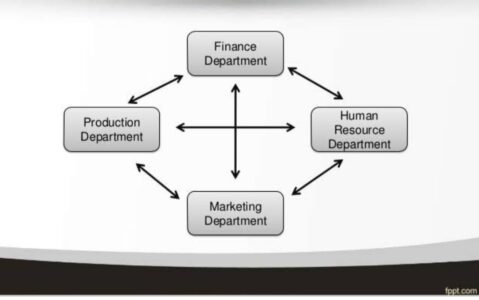Introduction
To realize the overall objective of the organisation a complete study is done with respect to the firm on the human resource and material resources and how they can be well organized. This principle has acquired its importance due to the increasing complexity among the firms and potential growth and contribution of automatic computers. This principle implies that every manager of the firm should be crisp and precise with respect to decision making and systematic flow of information. To put everything in place and turn successful there should be a recognised system of maintaining and developing corporate objectives.
Basically every organisation is seen as an organic and open system which is made up of interacting and interdependent components called subsystems. This whole system approach to management is well integrated with its subsystem in order which leads towards generating an ‘organised system’. A system is an assembly of things and parts all in a hierarchy leading to a complex system.
For example– The nation can be considered as a system which is composed of many interactive and interdependent systems of central government, state government and authorities coordinating the functioning of a nation or a country.
At first the detailed study and analysis must be done to form a system with best objectives then subsidiary system must be framed and incorporated to realize the objectives set above with much efficiency and accuracy.
What is the impact of the overall system approach to management being followed?
Serving as foundation of organizational development, the system is affected by internal and external elements while the synergy between the subsystems and interaction within the internal and external components brings best decisions and actions.
Characteristics of an organizational system approach
Sub-system– each organization’s effective system consists of related sub-systems which need to be interactive and interdependent to make the organization’s main system bring effective results.
Holism– decision taken for a sub-system not only affects the other sub-system working but also leaves it’s impact upon the overall organisation system established.
Composition of open and close systems- the whole organization is classified as open system while the subsystems operating within the organization can be open or closed.
Boundaries built– the organisation helps in providing boundaries which initially separates it from the system by classifying the internal and external parts.
Drawing inputs and its conversion– as a system of the organization the inputs are derived from the environment so it’s is converted to the output in form of goods and services.
Securing better performance– by regulating and adjusting the system and subsystems a better performance can be secured.
Management a multidisciplinary approach – it draws and combines the knowledge from various fields of discipline.
A system doesn’t operate and exists in vacuum while it receives information and material resources from other subsystems and undergoing it as a transformational process leaves behind the output to serve as an input for other corresponding subsystems in the way.
The system approach so adopted is vulnerable and adaptive to change due to the dynamic nature of the organisation and it’s organisation.
An organisation as a system is primarily comprised of five basic parts:
- Input
- Process
- Output
- Feedback
- Environment
This quality management principle of system approach to management strives to provide conceptual basis and guidelines for building and framing and efficient system for carrying out the functions of management of planning, organizing, coordinating and leading. It enables its business managers to look upon the system as an open adaptive system which has not only interdependent subsystems with interactive environments.
Importance of system approach to management
It supervises all the interrelated systems of the organisation, contributing to the overall objective of the organisation. The success of one department or a firm is not isolated; it is dependent and related to the various departments and firms significantly.
For example– if there is an issue of declining sales then it would require firms attention to resolve the issue. The top management would not only look towards marketing strategy techniques so adopted to promote the sales but would also see the quality of products if it is emerging as a factor of declining sales.
Then company can focus upon improving the strategies of producing quality products leading to greater customer experience that will help in uplifting the sales problem so faced by the firm.
Factors contributing in the system approach to management
Dependence– input of one system serves as an output for the other system and thus generating overall input for the firm to give back the output in form of goods and services. Rather than working isolated the entire working system is integrated with different subsystems.
Responsive to environment– as the external environment keeps changing so the organisation to survive in the environment against competitors also need to be dynamic. Even the organisation need to bring changes in its parameters to work as per expectations.
Outputs– this approach is focused to produce results for the overall system as per the requirements, so the performance of one subsystem wouldn’t contribute towards bringing best results rather integration of all subsystems would serve the purpose.
Targets– the focus of each part in the system must be clearly defined with defining their responsibilities. Overlapping of responsibilities can reduce focus and effectiveness of the entire running system.
Pros of system approach to management
- It helps in resolving the issues and problems faced within various departments with much holistic view and level.
- System approach throws more light on understanding the problem better and coming up with more effective solutions
- Helps in defining scope or boundary for system and problems in influence with internal and external factors considerably.
Cons of the system approach
- Sometimes the problems are complex enough which requires majorly focus on subsystems rather than on the whole system individually.
- If focus is only kept upon the overall system then some important details would get skipped while designing the approach from bottom to top.
Conclusion– System approach to management aims at coordinating and integrating all subsystems well and lead to towards bringing effective results for the overall objective and development of organisation through decision making process and actions taken.



